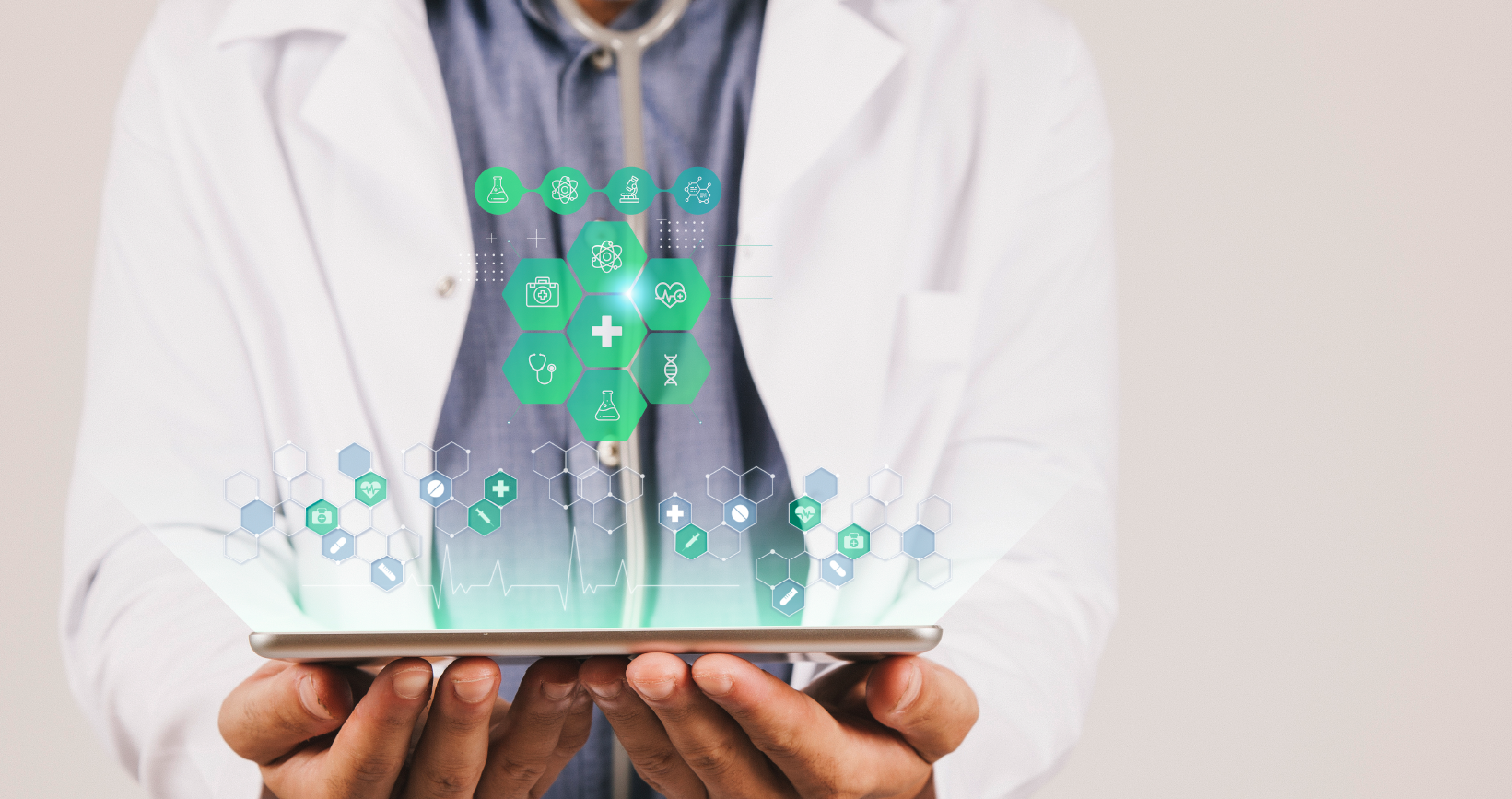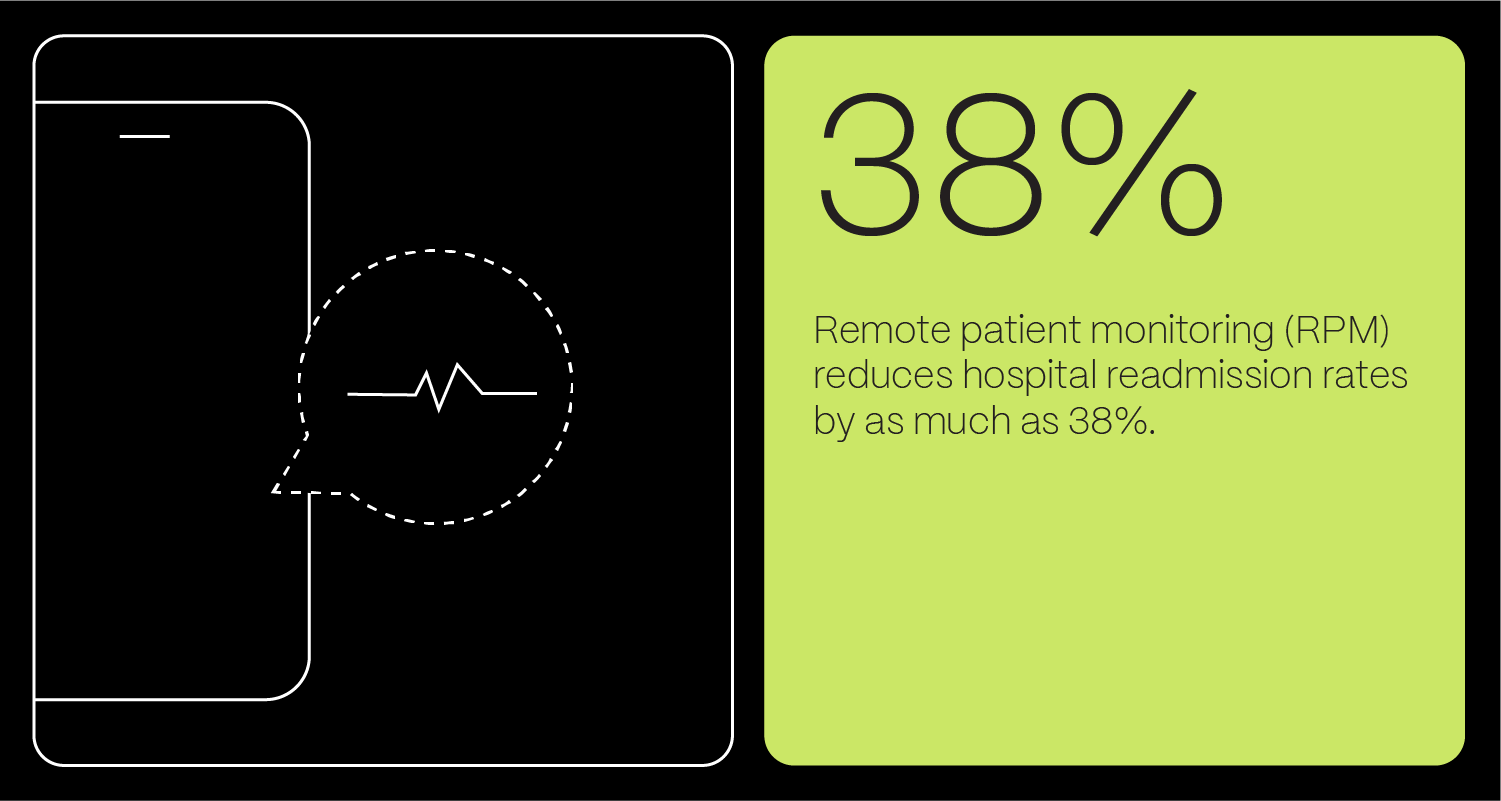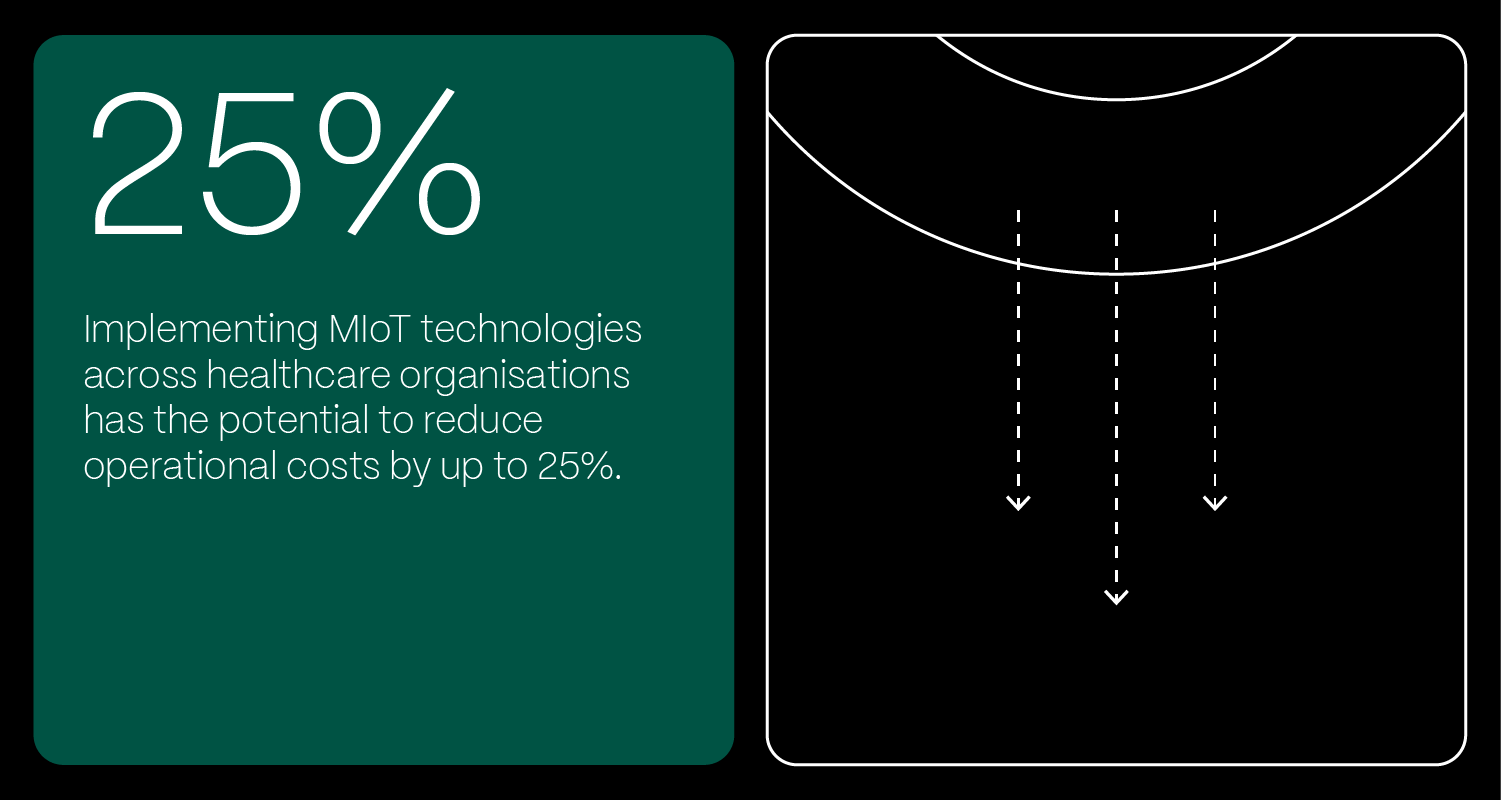Rewiring healthcare – how MIoT is powering the future of patient care

Moving healthcare from episodic to continuous. From centralised to everywhere. That’s the primary role of the Medical Internet of Things (MIoT).
And, by that, I mean lots of things. Smart implants that flag anomalies in real-time. Wearables that turn daily life into a stream of clinical-grade data. Remote monitoring tools that keep patients out of hospitals, without compromising care.
Statistics show that MIoT is not yet another hype. It represents a fast-growing, high-stakes transformation. Namely, the global IoT in healthcare market was valued at $44.21 billion in 2023 and is projected to skyrocket to $169.99 billion by 2030.
In this article, we’ll explore how MIoT is enabling a shift toward decentralised care – and what that means for patients, providers, and the tech shaping it all.
MIoT is patient-oriented
The promise of the Medical Internet of Things isn’t just in faster data or better–connected devices. It’s in making healthcare truly personal.
MIoT puts the patient at the centre by designing care pathways around their real needs, habits, and environments. This means tools that adapt to people, not the other way around.
From managing chronic conditions at home to reducing the cognitive load of post–op care, the best MIoT solutions prioritise usability, autonomy, and trust.
We’ve seen this in action with companies focused on neuroprosthetics and hearing solutions. One of our partners, for example, designed an implantable device paired with remote–friendly software that enables safe MRI scans, personalised surgical planning, and remote follow–ups.
Rethinking accessibility with decentralised care
We’re entering an era where healthcare isn’t tied to a building, but distributed across networks of connected devices, digital platforms, and patients’ own homes.
At its core, decentralised care shifts the focus from reactive, hospital-based treatment to home-centred health management. Connected devices are giving patients tools to manage chronic conditions with clinical oversight. All without setting foot in a waiting room.
And the numbers back this up. A report by Deloitte predicts that by 2040, more than 60% of healthcare services could be delivered outside traditional care settings.
A perfect example of the importance of remote health monitoring is our client, a health-tech startup. They teamed with us to help them build a mobile app that enables remote diabetes monitoring through wearable integration.
Designed to sync with Bluetooth-enabled glucometers, the app allows patients to track their blood glucose in real time and share data directly with their care teams. It features instant alerts for abnormal readings and secure messaging for seamless patient-provider communication. That way, the device supports timely, informed interventions without the need for in-person visits.
The role of wearables and remote monitoring in predictive healthcare
Gone are the days when wearables were just glorified pedometers. Cutting-edge devices, from FDA-approved smartwatches to implantable biosensors, are quietly revolutionising how we detect, track, and respond to health conditions.
Statistics claim the same. Namely, the global market for wearable medical devices is projected to reach $324.7 billion by 2032.
What sets medical-grade wearables and smart implants apart isn’t just their ability to passively collect data. It’s their integration into clinical decision-making. They provide clinicians with a real-time feed of patient health trends, enabling faster intervention when anomalies occur. And, they monitor a broad spectrum of vital signs.
As mentioned above, continuous glucose monitors offer minute-by-minute glucose tracking for diabetes patients. Smartwatches detect atrial fibrillation and blood oxygen saturation. Neurostimulator implants deliver targeted therapy for chronic conditions like epilepsy and Parkinson’s.
The benefits of Medical Internet of Things
Relieving the pressure on overstretched healthcare systems
Healthcare systems worldwide are under strain, and the staffing crisis is only intensifying. According to the World Health Organisation, we’re heading toward a global shortfall of 11 million healthcare workers by 2030 – a gap that will hit low- and middle-income countries hardest but won’t spare high-income nations either.
The impact is already visible. In the US, 80% of counties don’t have a single infectious disease specialist. And the aftermath of COVID-19 hasn’t helped – burnout and attrition have pushed systems to the edge, triggering an urgent push for digital solutions and smarter task distribution.
In this context, MIoT isn’t just innovation – it’s relief. Remote monitoring, automated alerts, and real-time data allow clinicians to oversee more patients with fewer resources, bridging workforce gaps and supporting consistent, high-quality care even in understaffed environments.
Reduction in hospital readmissions and early disease detection
The constant data stream enabled by connected devices allows healthcare professionals to identify subtle physiological changes that might otherwise go unnoticed, facilitating timely interventions before conditions escalate.
Research shows that remote patient monitoring equipped with early warning systems significantly enhances patient safety by detecting clinical deterioration promptly, leading to improved outcomes.
Unsurprisingly, one of the most immediate and measurable benefits of early disease detection and prevention is its impact on keeping patients out of the hospital after discharge, particularly those with chronic or high-risk conditions.
By using wearables and connected sensors to track key health metrics, clinicians gain continuous visibility into a patient’s post-discharge condition. This enables timely interventions when deviations from recovery norms occur, often before symptoms become serious.
This approach is especially vital in managing chronic illnesses like congestive heart failure or COPD, where readmission rates have historically hovered around 20–25% within 30 days. RPM has shown to cut those rates significantly, depending on the program and condition. In some cases, these rates can be reduced by as much as 38%, according to studies published in The Lancet Digital Health.
Making healthcare accessible to everyone
Access to quality healthcare has long been uneven, especially for patients in remote, rural, or underserved urban areas. The Medical Internet of Things (MIoT) is beginning to close that gap, offering a more inclusive healthcare model that meets patients where they are.
With connected devices enabling remote diagnostics, continuous monitoring, and virtual consultations, patients no longer have to travel long distances to receive care. For many, this means earlier intervention, better management of chronic conditions, and fewer missed appointments due to logistical barriers.
A recent study found that telehealth powered by remote monitoring increased care access by over 30% among underserved populations, particularly elderly and mobility-limited patients.
Smarter systems, leaner budgets
By enabling remote patient monitoring, early detection, and fewer in-person consultations, MIoT shifts care from reactive to proactive. That means fewer emergency room visits, shorter hospital stays, and less reliance on physical infrastructure.
According to a report cited by PMC, implementing MIoT technologies across healthcare organisations has the potential to reduce operational costs by up to 25%, especially in chronic care management.
For patients, this means fewer co-pays, reduced travel expenses, and less time off work.
Let’s take the abovementioned hospital readmissions as one example. With smart monitoring systems and real-time alerts, healthcare teams can intervene before complications escalate, which can save thousands of dollars per patient.
Beyond direct savings, there’s the efficiency factor. MIoT tools allow for better resource allocation, ensuring that staff time, medical equipment, and even hospital beds are used only when truly needed. The result? Streamlined workflows, lower overhead, and higher ROI on medical technology investments.
Improved operational efficiency
Healthcare systems are complex machines. When even one cog misfires, it can ripple into delays, wasted resources, and overworked staff. That’s where the Medical Internet of Things comes in, transforming operational headaches into streamlined, data-driven workflows.
Let’s take an example of AI scribes (e.g., Abridge, Microsoft’s DAX Copilot) that cut note-taking time by up to 30%, so providers spend more of their shift in front of patients, not paperwork.
With it, hospitals can cut through the clutter and operate with greater precision. This isn’t just about convenience. It’s about delivering faster, more responsive care while making the most of available resources.
This kind of efficiency goes beyond financial gains. Operational improvements also have a direct effect on staff satisfaction and burnout rates, as well as result in:
- Shorter wait times for diagnostics, surgeries, and admissions.
- Faster equipment retrieval during critical moments.
- Improved staff allocation based on real-time patient load and priorities.
What is standing in the way of wider IoT adoption, and how to overcome these challenges?
Despite the growing number of connected health devices on the market, there are still three major roadblocks holding the industry back.
Information overload
Smart devices are data machines. They track vitals, monitor chronic conditions, and collect real-time insights. All day, every day. While that sounds like a win, the volume of data can quickly become overwhelming, especially for clinicians unfamiliar with managing it.
A 2018 survey showed that 71% of medical device manufacturers didn’t believe healthcare providers were ready to act on the insights these devices deliver. Fast forward to today, and the situation hasn’t drastically improved. Many healthcare professionals still face a steep learning curve when it comes to interpreting and integrating this data into patient care.
Implementation gaps
Smart health tech may be advancing, but accessibility and usability are lagging behind. For many patients, especially older ones or those in underserved regions, IoT devices are still unfamiliar territory. Getting them set up and used correctly isn’t always easy.
On top of that, regulatory frameworks haven’t quite caught up with the tech. Even several years ago, around two-thirds of medtech companies believed that regulations would take five more years to support what connected devices are truly capable of. And they weren’t wrong. Red tape is still slowing down rollouts, especially when it comes to compliance across different markets.
Security concerns
Healthcare data is some of the most sensitive data out there, and that makes it a prime target for cyberattacks. The problem? IoT devices aren’t always built with airtight security in mind. For hospitals and clinics, this is a serious liability.
Despite being legally required to protect patient data, many providers are understandably wary of introducing more endpoints into their networks. One breach can lead to legal, financial, and reputational damage. In fact, according to a 2023 report by Ponemon Institute, 88% of healthcare organisations experienced an average of 40 cyberattacks over the previous year, while 24% said these incidents led to increased patient mortality rates.
This makes it important to carefully evaluate digital product development companies, particularly in terms of security capabilities. A well-planned approach can support the adoption of new technologies without increasing risk to patient safety or data privacy.
The future of healthcare is connected – are you in?
The Medical Internet of Things isn’t a step forward. It’s a new direction. It redefines what care looks like, turning continuous data into instant decisions. Static systems into living, learning networks.
The real question here?
Is your healthcare system built to lead or just trying to keep up?
So, if you intend to build this future actively and not just code, you need the right digital product development partner to make it work. From connecting devices to building compliant, scalable ecosystems, we help healthcare providers turn continuous data into better decisions and better outcomes.




